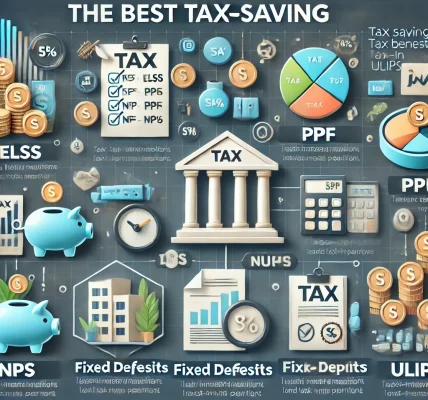Saving money is one of the most important financial habits that can secure your future. However, not all savings plans are created equal. Depending on your financial goals, you may need to choose between short-term and long-term savings plans. Understanding their differences, benefits, and drawbacks can help you make an informed decision that aligns with your financial needs.
What Are Short-Term Savings Plans?
Short-term savings plans are financial instruments designed to provide liquidity and returns within a short duration, typically ranging from a few months to five years. These plans are ideal for individuals who need quick access to their funds or are saving for immediate financial goals such as:
- Emergency funds
- Buying a car
- Planning a vacation
- Home renovations
- Wedding expenses
Advantages of Short-Term Savings Plans
- Liquidity: Short-term savings plans offer easy access to funds when needed.
- Low Risk: These plans are generally low-risk because they are not exposed to market fluctuations.
- Flexibility: You can withdraw money whenever needed without significant penalties.
- Ideal for Emergency Funds: Short-term savings plans serve as an excellent financial cushion for unexpected expenses.
Disadvantages of Short-Term Savings Plans
- Lower Returns: Since these plans focus on liquidity, the interest rates are usually lower compared to long-term options.
- Impact of Inflation: Short-term savings may not grow enough to counter inflation, reducing purchasing power over time.
Popular Short-Term Savings Options
- High-Yield Savings Accounts: Offer better interest rates than regular savings accounts.
- Fixed Deposits (FDs) with Short Tenures: Provide guaranteed returns over a fixed duration.
- Recurring Deposits (RDs): Allow regular savings with assured returns.
- Money Market Accounts: A mix of savings and investment with moderate returns.
- Treasury Bills (T-Bills): Government-backed short-term securities.
What Are Long-Term Savings Plans?
Long-term savings plans are designed for individuals who want to accumulate wealth over an extended period, usually beyond five years. These plans are ideal for life goals such as:
- Retirement planning
- Buying a house
- Funding higher education for children
- Wealth creation
Advantages of Long-Term Savings Plans
- Higher Returns: Long-term plans often offer better returns due to compound interest and market growth.
- Wealth Accumulation: Helps in building substantial savings over time.
- Tax Benefits: Many long-term savings options provide tax advantages.
- Retirement Security: Ensures a financially stable post-retirement life.
Disadvantages of Long-Term Savings Plans
- Limited Liquidity: Accessing funds before maturity may result in penalties or lower returns.
- Market Risk: Some long-term plans, such as mutual funds, are subject to market fluctuations.
- Commitment Required: Long-term savings demand financial discipline and patience.
Popular Long-Term Savings Options
- Public Provident Fund (PPF): A government-backed plan offering tax-free returns.
- Employee Provident Fund (EPF): A retirement-focused savings scheme.
- National Pension System (NPS): Provides pension benefits with tax advantages.
- Mutual Funds (Equity and Debt Funds): Offer higher returns with varying risk levels.
- Life Insurance Savings Plans: Combine insurance and investment benefits.
- Fixed Deposits with Long Tenures: Offer stable returns over an extended period.
Short-Term vs. Long-Term Savings: A Comparison
| Feature | Short-Term Savings | Long-Term Savings |
|---|---|---|
| Liquidity | High | Low |
| Returns | Low to Moderate | Moderate to High |
| Risk | Low | Varies (low to high) |
| Investment Horizon | Few months to 5 years | 5+ years |
| Ideal For | Emergency fund, short-term goals | Retirement, education, wealth creation |
| Tax Benefits | Limited | Available in many plans |
How to Choose Between Short-Term and Long-Term Savings Plans
- Define Your Goals: If you need money within a few years, opt for short-term savings. For long-term goals, choose investment-focused plans.
- Assess Risk Tolerance: If you prefer stability, go for low-risk short-term plans. If you can tolerate market risks, long-term investments might be better.
- Consider Tax Benefits: Long-term plans often provide tax-saving advantages.
- Ensure Financial Stability: Maintain a mix of both short-term and long-term savings to balance liquidity and wealth accumulation.
- Monitor Inflation: Long-term savings should grow at a rate that beats inflation to maintain purchasing power.
Final Verdict: Which One is Better?
Both short-term and long-term savings plans have their own merits. The best approach is to have a diversified savings strategy that includes both. Keep short-term savings for emergencies and immediate needs, while allocating a portion of your income to long-term savings to secure financial stability and growth.
By balancing both types of savings, you can enjoy financial security, meet life goals, and make the most of your hard-earned money.
Conclusion: Choosing between short-term and long-term savings plans depends on your financial objectives, risk tolerance, and investment horizon. By carefully evaluating your needs, you can make an informed decision that helps you achieve both your short-term and long-term financial goals efficiently.



